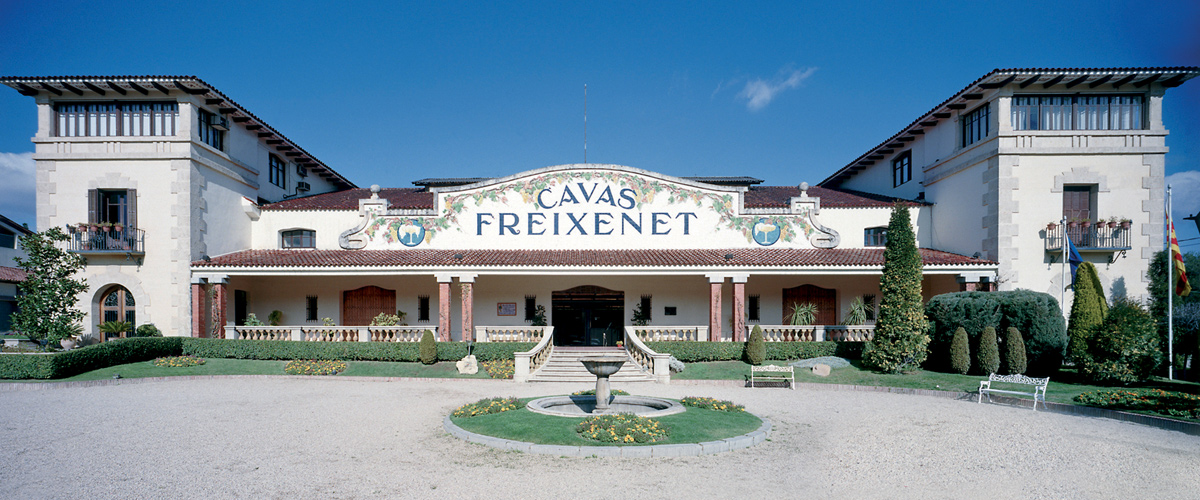Winery

The Freixenet winery is situated in Spain’s Penedes wine region, 50 kms south west of Barcelona in Sant Sadurni D'Anoia. The history of the Ferrer family and roots of Freixenet are deeply entwined in the Penedès region. The house of founder Pedro Ferrer Bosch still sits on the original vineyard “La Freixenada”. This location is integral, not only to Freixenet’s superior quality, but also the brand character. Freixenet embodies the passion, the spontaneity and the Mediterranean joy for life, just like the people in the area.
The Penedes region, famous for Cava (Spanish sparkling wine), is one of the oldest wine producing regions in the world. It is a landscape of rolling hills, protected from easterly winds by the Garraf Massif and from cold northern breezes by the craggy Montserrat Mountain. The area is blessed by nature with a rich chalky soil and long hours of sunshine.
Freixenet wines adhere to a rigorous quality control established by the Spanish regulatory board. Freixenet only uses handpicked grapes, sourced from both estate and local grower vineyards in the Penedès region.
Freixenet wines are made exclusively using the traditional method (the same method as Champagne), in which the second fermentation takes place in the bottle. This double fermentation ensures the highest quality wines, with more layers of complexity and finer bubbles.
First fermentation takes place in stainless steel tanks with specially grown Freixenet yeast culture. After primary fermentation, the wine is transferred to bottle for secondary fermentation and aged in the 54kms of caves under the Freixenet winery in Sant Sadurni. The wine bottles are placed on special racks at a 45-degree angle so that the yeast sediment, or lees, can collect in the neck of the bottle and be disgorged.
Freixenet has a unique taste as it uses indigenous grapes in the Penedes region and all Freixenet products have been fermented in the bottle you buy. You will immediately notice the difference in the weight of a Freixenet bottle compared to the lower quality sparkling products as thicker glass is needed during the secondary fermentation process.
Share this